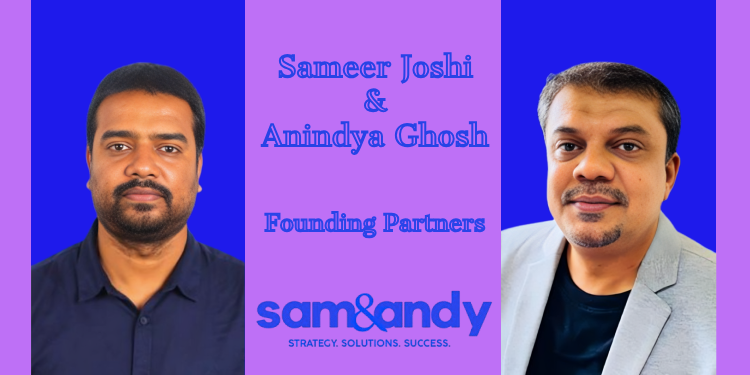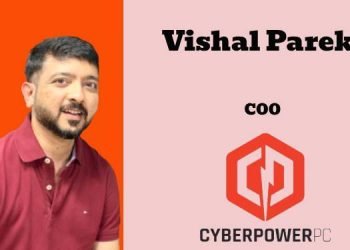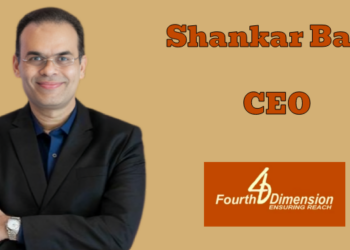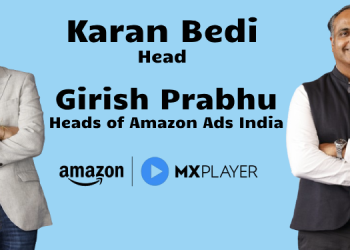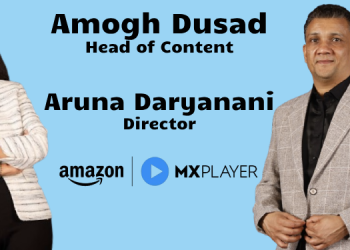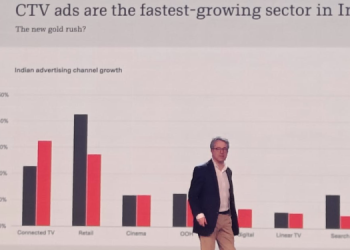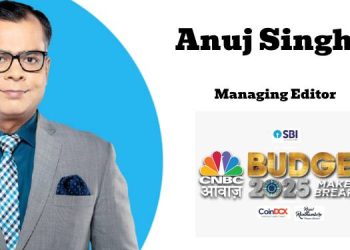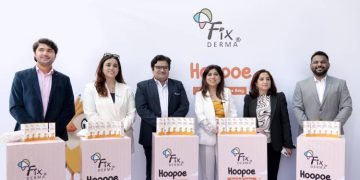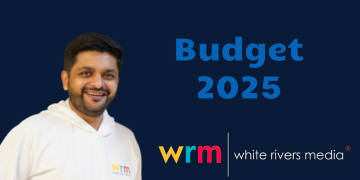Sameer Joshi and Anindya Ghosh, Founding Partners of Sam & Andy, bring over 40 years of combined experience in business-to-brand clarity, strategic marketing, digital solutions, and advertising. Having worked with global communication agencies and corporates in India and abroad, they lead a strategy-first outfit that was founded in 2018 and is based in Mumbai, serving clients across India, the Middle East, and South Asia.
Sam & Andy takes a 360-degree approach, offering end-to-end solutions that provide clarity through actionable strategies for business growth. Their Analyse, Strategise, Create & Implement framework ensures businesses—regardless of size—receive dedicated attention from the leadership.
Beyond working with brands, they collaborate with communication agencies as their brand planning and growth partner. Their client roster includes Airtel, Sony Pictures Network India, Country Delight, Goldiee Masale, Fast&Up, Ayanika, Aroma Care, and many more.
Medianews4u.com caught up with Sameer and Anindya to discuss their unique approach to marketing, industry trends, and the future of performance-driven strategy.
Q. Sam & Andy is a revenue marketeer. What does this entail?
If we were to sum this up in a single word, it would be ‘ownership’. This means delivering results that positively impact businesses. Thanks to digital technology, everything is measured and linked to ROI, which should be the right way of doing business. In today’s competitive world, everyone needs sales and revenue—how can you help achieve that? The solution to this will ensure you sit not across the table but beside the business owners.
We don’t just go in as another agency but as partners; and when you define yourself as partners, ownership comes naturally attached to it. At Sam & Andy, we strongly believe in partnering with clients in their revenue generation and sustainable growth journey—otherwise, they don’t need us.
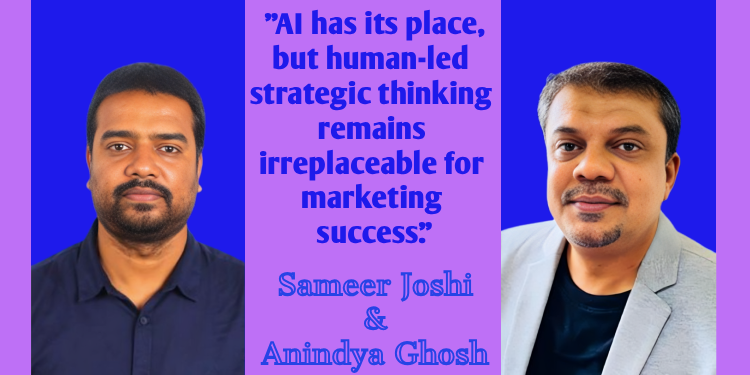
Q. Could you talk about the agency’s model 3-6-365, which combines short- and long-term results for its Middle-India clients?
The answer is in your question. Yes, it’s about short- and long-term results for any client, whether in Middle India or elsewhere. Every client or brand wants to make their brand popular, but at the same time, they want sales to grow.
No one has the patience to focus solely on the long-term process of building a brand, even though that is critical and important. During our journey, we realised that we needed to develop a model that balances both brand building and revenue generation. The 3-6-365 model works as follows:
- 3 months – Immediate action required – tactical in nature for brand-to-business impact.
- 6 months – Short-term strategy – setting the right priorities for the brand to contribute to the business in a measurable manner.
- 365 days – Mid- to long-term – creating clarity for business growth and sustainable success.
Q. The positioning pitch is clarity. Does that mean understanding the clients’ business needs inside out and where they are currently in the market?
You can’t manage any business if you don’t fully understand it. So that is one aspect we obviously follow. When we say clarity, we mean providing clients with a clear path without ambiguity.
We don’t aim to teach clients how to run their business—they know that much better than we do. However, as businesses grow, they often follow the same pattern because it has delivered results in the past. While this may work in the short term, they may not realise its impact in the long term. At this stage, they don’t need a campaign; they need strategic clarity, which is often missing in their plan.
This could relate to brand structuring, the segment they are reaching out to (or missing), product portfolio, architecture, channel selection, and many other factors that help them view their growth path from a different perspective.
We have had clients approach us with issues in their existing business, and we provided clarity that led them to launch a new business vertical in the same domain. This worked wonders for them. That is how our clarity approach plays a role.
Q. On the P&L front, are the agency’s fees often linked to performance? Is this link going to be important for the industry to thrive in 2025?
As mentioned above, every client is focused on ROI. Gone are the days when a typical agency’s role was simply to come up with a campaign and determine fees based on the scope of work. Previously, campaigns were primarily judged on awareness and reach, with few KPIs related to revenue impact.
Now, with digital marketing being entirely results- and delivery-driven, the future of marketing—beyond just 2025—will be performance-linked.
It may evolve into a combination of a minimum operational cost as a fixed fee and performance-based incentives. In fact, this shift presents agencies with a better opportunity to earn greater revenues.
For years, agencies have played a significant role not only in establishing brands but also in generating huge sales. While brands and companies grow, agencies remain content with their small share of fees. This is one reason why our industry has not grown as much as it should have. A performance-based model will help the industry thrive, as agencies will have genuine skin in the game.
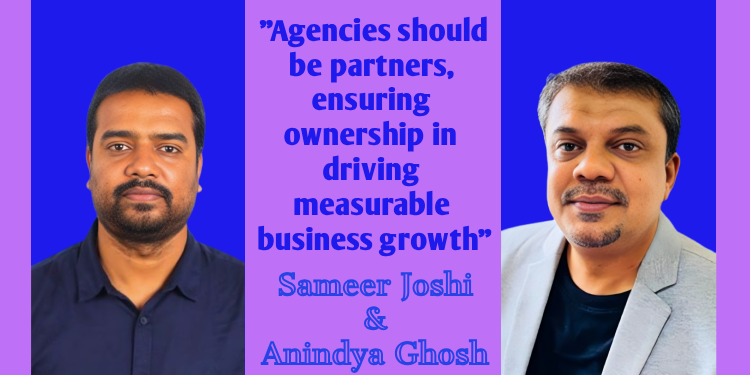
Q. Is one of the issues in the creative industry the fact that the focus is often on the quality of the creative rather than on whether it will drive consumer action?
If you are a creative agency, your reason to exist is to deliver top-notch creative work. So, there is nothing wrong with focusing on quality creative output. However, as discussed earlier, the scope of work has always been defined accordingly.
When a client is clear about what they want, agencies will surely deliver on driving consumer action. So, it all comes down to the brief the agency receives and the clarity on what is required at the end of the campaign. Finally, if it’s an activation, it must have quality ideas and execution.
Q. Could you talk about work recently done with brands like Aroma Care, Country Delight, Goldiee Masale, Airtel, Sony Pictures Network India, and Fast&Up that stands out?
We have partnered with various clients to address diverse strategic challenges. Some engagements involved aligning management teams on defining their core business strategy for the near future, while others focused on:
- Market positioning
- Strategic lead generation
- Product portfolio mapping and dashboarding
- Performance marketing
- Guiding sales teams to shift from traditional category-based selling to an insight-driven sales approach
Q. The agency feels that sectors like branded jewellery, organic food, nutraceuticals, and health and wellness have a lot of potential. What is the game plan to tap into them?
We have previously worked with clients in these categories and continue to do so, giving us substantial insights into these sectors. We aim to leverage these insights to deepen our penetration into these industries and have already identified key players for potential engagement.
Q. Could you talk about the collaboration model that has stood the agency in good stead?
From the outset, we developed a robust collaboration model. The same team that partnered with us on our initial project continues to work with us today.
Our goal is not only to engage like-minded individuals but also to leverage their specific expertise. This model includes a team of over 25 professionals who primarily focus on our work.
While they are not classified as freelancers, they are also not traditional employees. We designed a system where everyone acts as their own boss, understands their value, and enjoys autonomy to deliver exceptional results. We adopted this model before the Covid pandemic, and it has continued to strengthen daily.
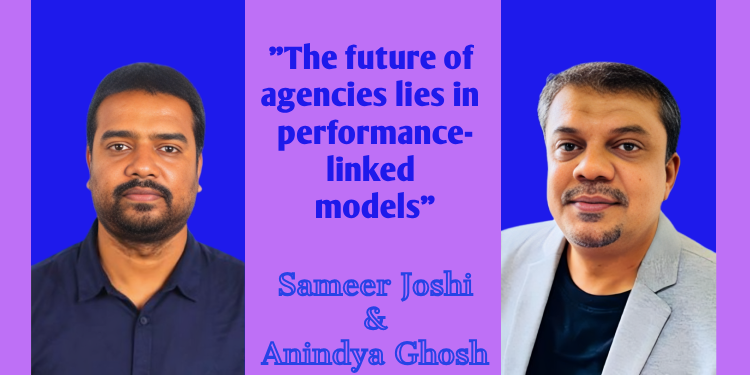
Q. How has Sam & Andy integrated AI?
As of now, we have not integrated AI into any of our work. We lead with strategy, and for that, we strongly believe that integrating human intelligence (HI) is more effective than AI. HI (human intelligence, instinct, and indigenous knowledge) > AI.
Q. How will Sam & Andy leverage data analytics to help clients achieve their goals?
Data provides valuable insights that, when interpreted correctly, can drive remarkable results. We use data strategically to optimise business-to-brand transformation and performance.
For us, performance is an extension of strategy. By helping clients sell their products, we integrate data creatively and strategically to achieve the best possible outcomes.
Q. Another focus area is educating the industry through courses. What are the plans in this regard?
We have developed approximately 160 hours of content, including over 45 in-house exercises and gamification modules on various business topics, which we intend to monetise.
We plan to develop courses to address the shortage of strategists and thinker-doers in our industry. These courses will be practical and aimed at marketers, brand managers, planners, founders, and others. This initiative is currently in the planning stage and will be launched soon.

